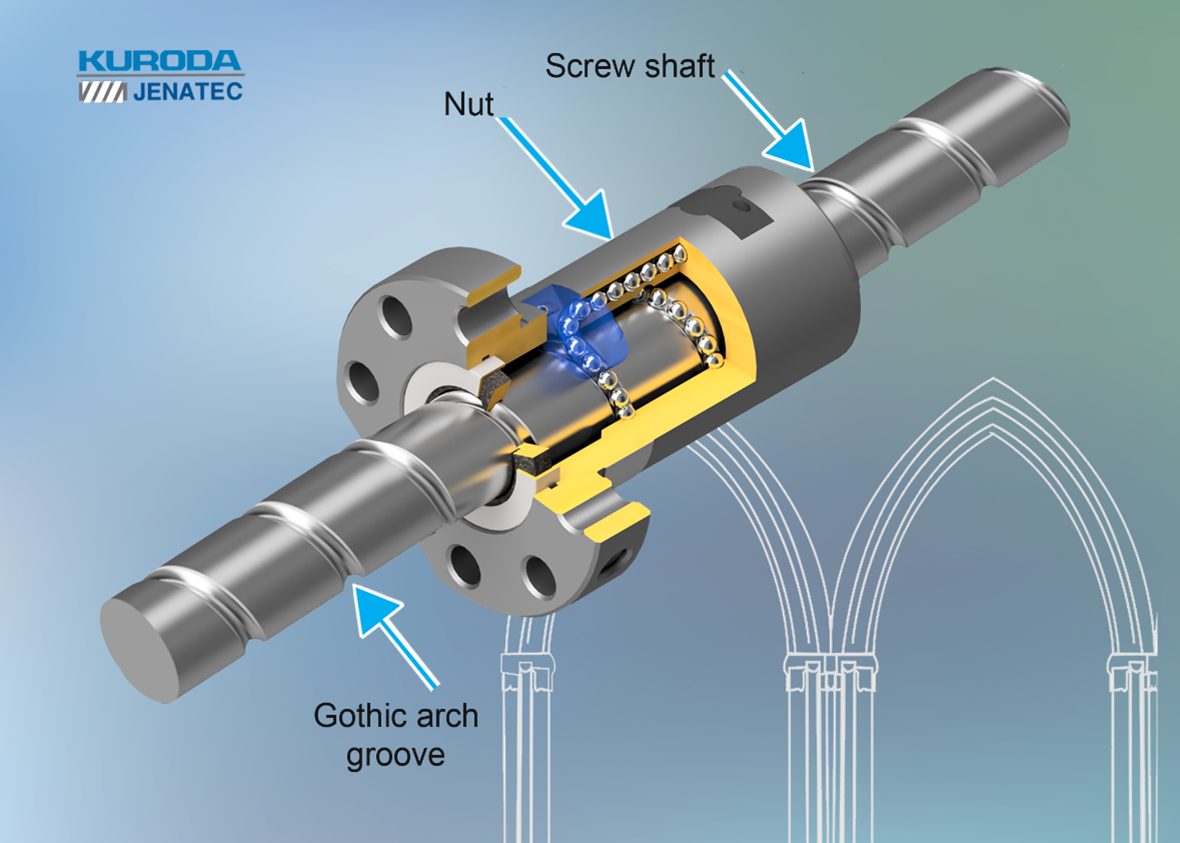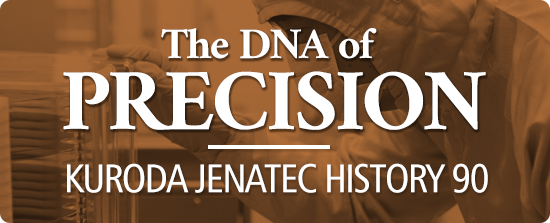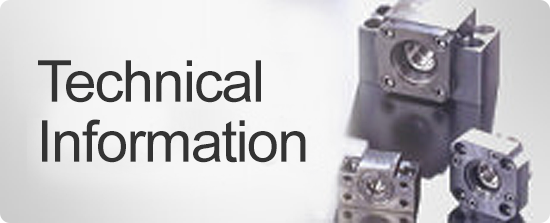The unique element of a Ball Screw is the recirculating balls that roll between the screw shaft grooves and nut, allowing the screw shaft or nut to rotate with minimal force required. The groove in which the balls roll is called the ball screw "thread" or sometimes "rolling surface". The shape of the groove is unique as well - not a simple circular arc, but a "gothic arch" profile form.
Why are ball screw threads designed to be gothic arches? The gothic-arc geometry originates back in Roman time architecture. A gothic arch (also called a pointed arch) is an arch shape with two centers of equal radii that are superimposed in such a way that they meet at a relatively sharp angle at the crown. Gothic arches are often seen in gates or windows of gothic churches.
In mechanical terms, this pointed arch shape, made by two intersecting arcs, provides four-point contact between the recirculating balls and the screw thread – the ball has two contact points on the screw shaft and two contact points in the ball nut which enables refined axial clearance management and smoother running characteristics. Also, the gothic arch form makes it easier to lightly turn the nut. The nut of a ball screw is a cylinder that houses the ball bearing and its recirculation system, and ball grooves inside the nut housing match the grooves of the screw shaft.
So, simply put, the Gothic arch, in mechanical terms, describe the shape of a ball screw thread. Ball Screws are machined assemblies which convert rotary motion to linear motion. A ball screw functions by combining three elements: a screw shaft, a nut, and recirculating balls. Gothic arch thread form is a common feature of ball screws across the industry.

- # BALL SCREWS
- # LINEAR MOTION COMPONENTS
- # BALL SCREW THREAD
- # GOTHIC ARCH BALL GROOVE



